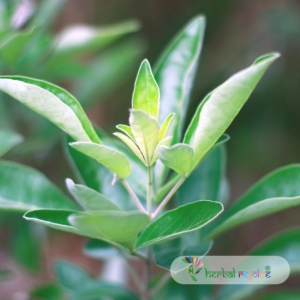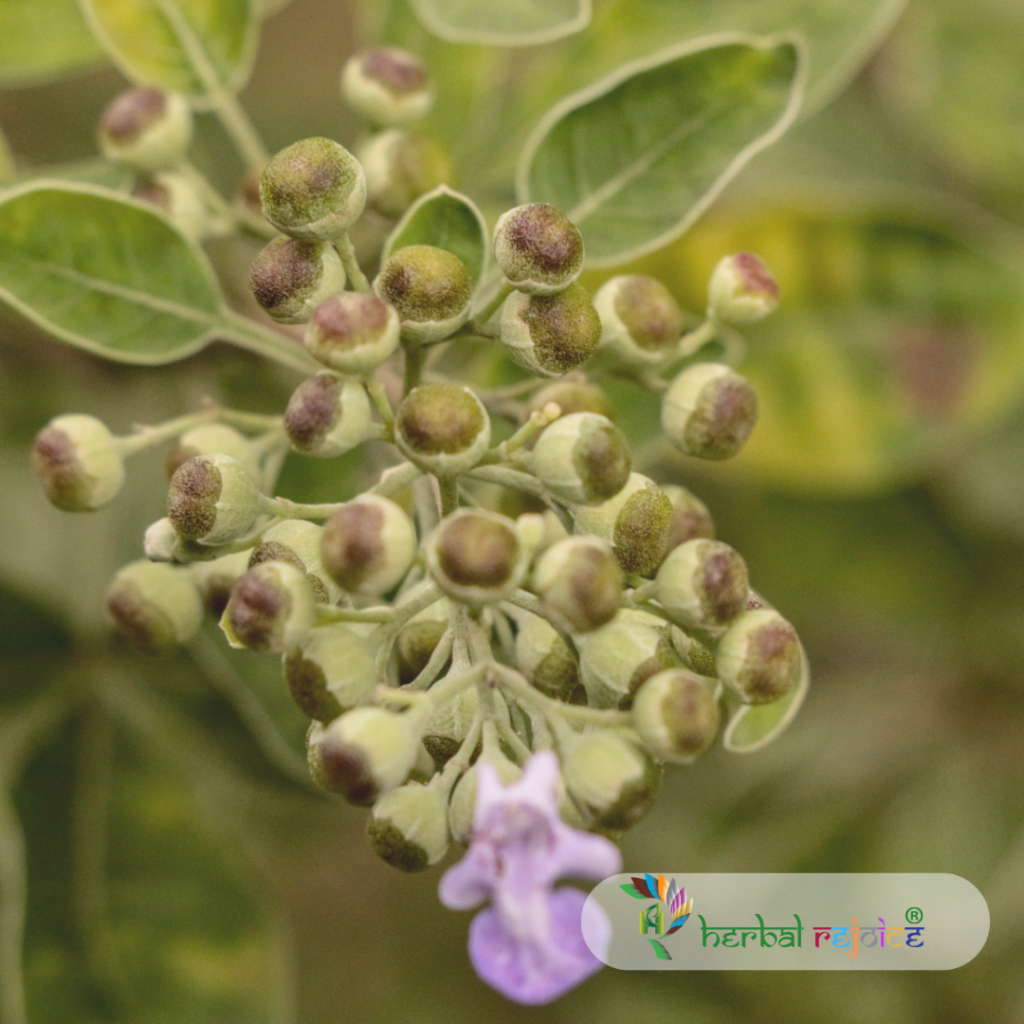Introduction
Vitex trifolia Linn., commonly known as Sinduvaara or Nirgundi (white var.), is a plant belonging to the Verbenaceae family. It can be found throughout India in tropical and subtropical regions. In Ayurveda, it is also referred to as Sinduvaara or Nirgundi, while in Siddha/Tamil medicine, it is known as Karu Nochi or Siru Nochi. In folk medicine, it is called Paani-Sambhaalu.
Medicinal Uses
The leaves of Vitex trifolia have various medicinal properties. They are known to have febrifuge, antibacterial, anthelmintic, and cytotoxic effects. In fact, a study has shown that an extract of the leaves exhibited inhibitory action against Mycobacterium tuberculosis, the bacteria responsible for tuberculosis. The leaves are commonly used as a poultice to relieve rheumatism, inflammations, and sprains. The root and flowers of the plant also have febrifuge properties, while the root acts as an expectorant. Additionally, the fruit of Vitex trifolia is used in the treatment of amenorrhea, a condition characterized by the absence of menstruation.
Chemical Constituents
Chemical analysis of Vitex trifolia has revealed the presence of various compounds. The aerial parts of the plant contain friedelin, betasitosterol, and its beta-D-glucoside, as well as a long-chain hydrocarbon. The leaves, on the other hand, contain flavonoids such as artemetin, luteolin, orientin, and casticin. They also contain iridoid glycosides, including aucubin and agnuside. The fruits of the plant contain an alkaloid called vitricin. Two compounds, vitrosin A and vitexicarpin, which were isolated from Vitex trifolia, have been found to block the spontaneous contraction of the guinea-pig trachea induced by histamine.
Apart from its medicinal properties, Vitex trifolia has certain other benefits. The leaves are believed to improve memory and promote hair growth. Furthermore, an extract of the leaves has shown significant antitumor activity in a murine tumor system.

Conclusion
In conclusion, Vitex trifolia, also known as Sinduvaara or Nirgundi, is a plant with a wide range of medicinal properties. Its leaves are known for their febrifuge, antibacterial, anthelmintic, and cytotoxic effects. The root and flowers also have febrifuge properties, while the fruit is used in the treatment of amenorrhea. Chemical analysis of the plant has revealed the presence of various compounds, including flavonoids and alkaloids. Apart from its medicinal benefits, Vitex trifolia is also believed to improve memory and promote hair growth.
Frequently Asked Questions
1. What is the common name of Vitex trifolia Linn?
The common name of Vitex trifolia Linn. is Sinduvaara or Nirgundi (white var.).
2. To which family does Vitex trifolia belong?
Vitex trifolia belongs to the Verbenaceae family.
3. Where can Vitex trifolia be found?
Vitex trifolia can be found throughout India in tropical and subtropical regions.
4. What are the medicinal properties of the leaves of Vitex trifolia?
The leaves of Vitex trifolia have febrifuge, antibacterial, anthelmintic, and cytotoxic effects.
5. How do the leaves of Vitex trifolia relieve rheumatism, inflammations, and sprains?
The leaves of Vitex trifolia are commonly used as a poultice to relieve rheumatism, inflammations, and sprains.
6. What is the root of Vitex trifolia commonly used for?
The root of Vitex trifolia has febrifuge properties and acts as an expectorant.
7. How is the fruit of Vitex trifolia used in medicine?
The fruit of Vitex trifolia is used in the treatment of amenorrhea, a condition characterized by the absence of menstruation.
8. What compounds have been found in the aerial parts of Vitex trifolia?
The aerial parts of Vitex trifolia contain compounds such as friedelin, betasitosterol, and its beta-D-glucoside, as well as a long-chain hydrocarbon.
9. What compounds can be found in the leaves of Vitex trifolia?
The leaves of Vitex trifolia contain flavonoids such as artemetin, luteolin, orientin, and casticin. They also contain iridoid glycosides, including aucubin and agnuside.
10. What alkaloid is present in the fruits of Vitex trifolia?
The fruits of Vitex trifolia contain an alkaloid called vitricin.
11. What compounds isolated from Vitex trifolia have been found to block histamine-induced contractions?
Vitrosin A and vitexicarpin, which were isolated from Vitex trifolia, have been found to block the spontaneous contraction of the guinea-pig trachea induced by histamine.
12. Besides its medicinal properties, what other benefits does Vitex trifolia have?
Vitex trifolia is believed to improve memory and promote hair growth.
13. What significant antitumor activity has been observed in Vitex trifolia?
An extract of the leaves of Vitex trifolia has shown significant antitumor activity in a murine tumor system.
14. What are some traditional medicine names for Vitex trifolia?
In Ayurveda, Vitex trifolia is also referred to as Sinduvaara or Nirgundi, while in Siddha/Tamil medicine, it is known as Karu Nochi or Siru Nochi. In folk medicine, it is called Paani-Sambhaalu.
15. Does Vitex trifolia have any antimicrobial properties?
Yes, Vitex trifolia has antibacterial properties.
16. What specific bacteria does Vitex trifolia exhibit inhibitory action against?
An extract of the leaves of Vitex trifolia has exhibited inhibitory action against Mycobacterium tuberculosis, the bacteria responsible for tuberculosis.
17. Can Vitex trifolia help with memory and hair growth?
Yes, Vitex trifolia is believed to improve memory and promote hair growth.
18. Is Vitex trifolia safe to use as a medication?
It is always recommended to consult with a healthcare professional before using any plant as a medication.
19. Are there any side effects associated with the use of Vitex trifolia?
There may be some potential side effects associated with the use of Vitex trifolia, but it is best to consult with a healthcare professional for specific information.
20. Is Vitex trifolia commonly used in modern medicine?
Vitex trifolia is used in various traditional medicine systems, but its use in modern medicine may vary. It is always best to consult with a healthcare professional for specific medical advice.


